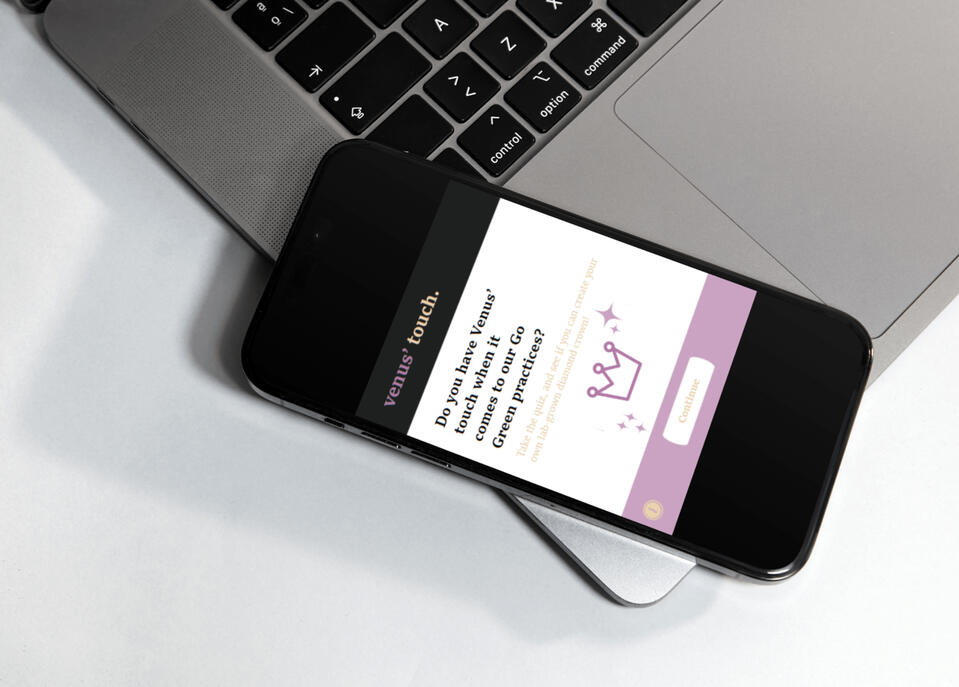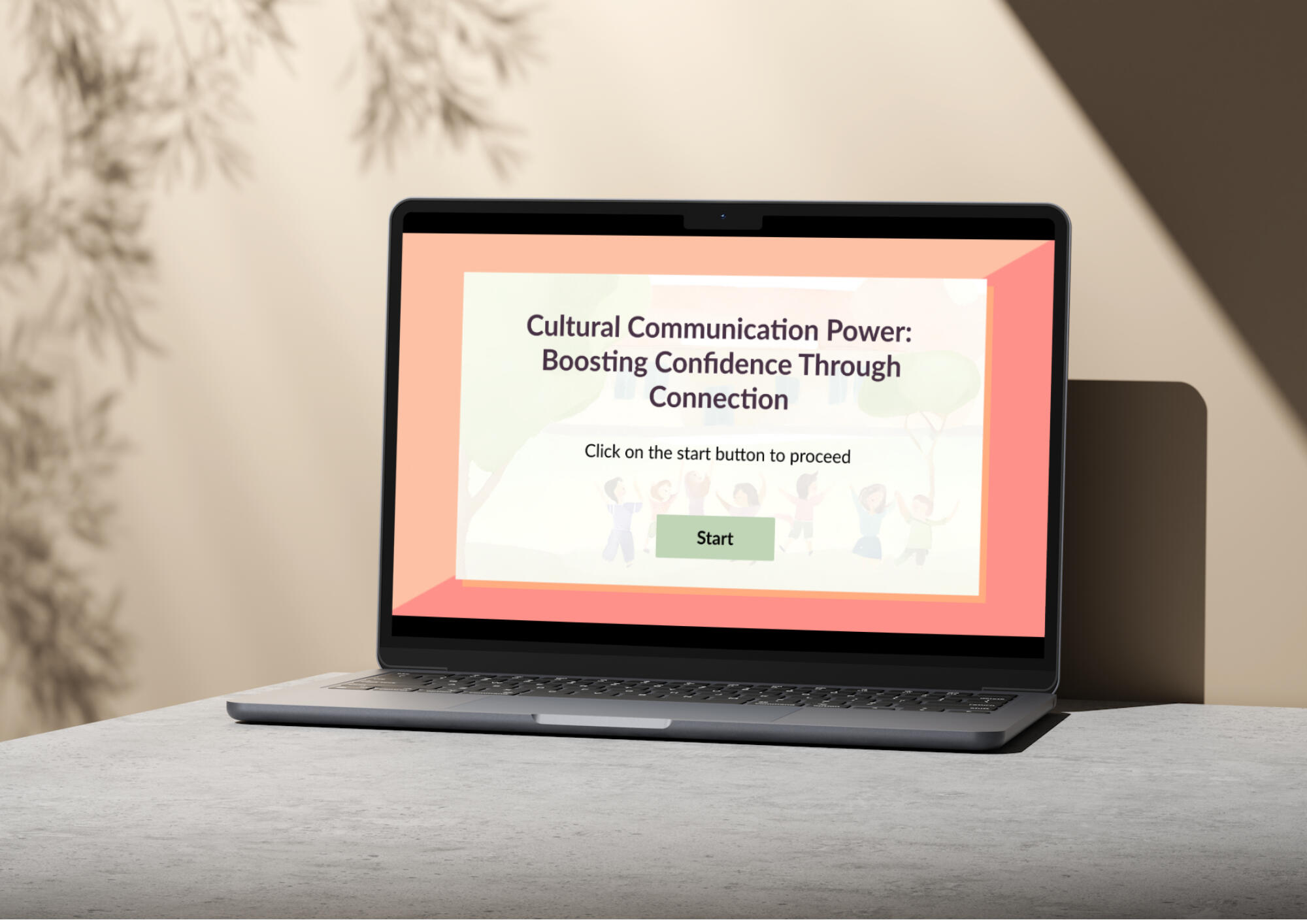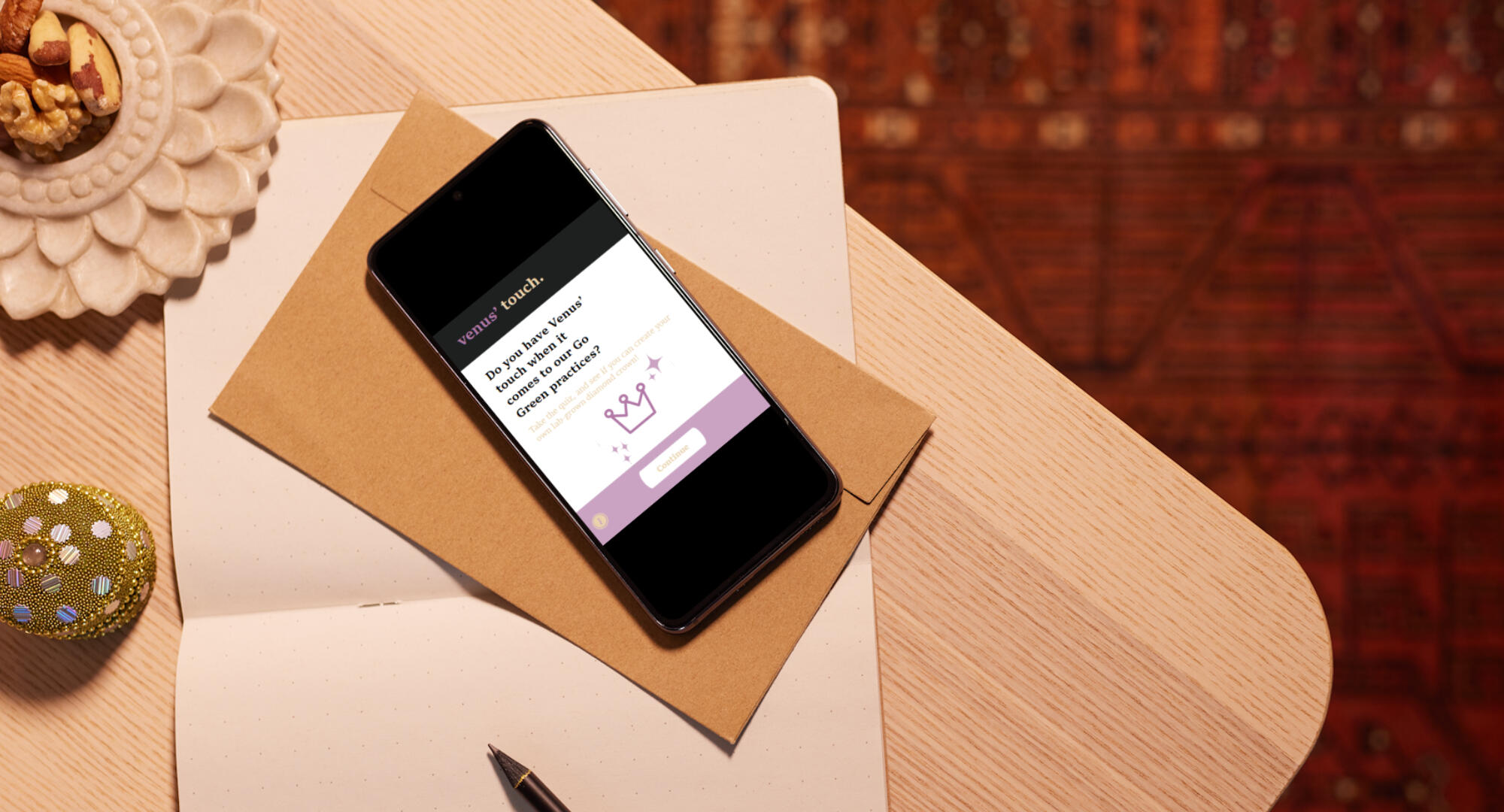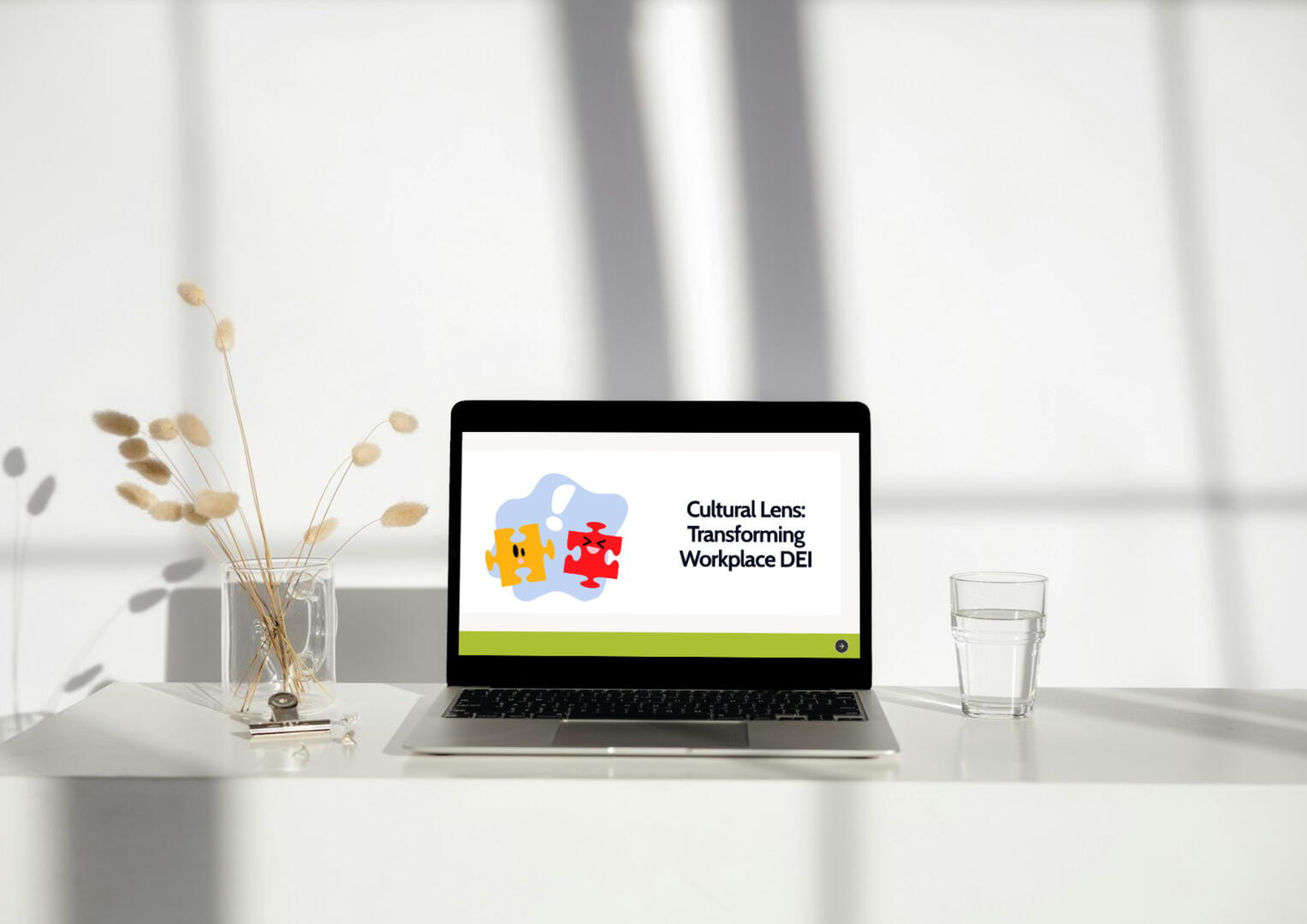
thejanuarydesigns
Creating intentional, collaborative and learner-focused designs together.
Come check out my work!

Cultivating Global Citizens: Empowering Third Culture Kids

Cultural Lens: Transforming Workplace DEI

Cultural Communication Power: Boosting Confidence Through Connection

Rumie Bytes: Explore my Microlearning Experiences

do you have venus' touch when it comes to our go green practices?
Cultivating Global Citizens: Empowering Third Culture Kids

Modality: xAPI e-Learning Course
Audience: Teachers at International Schools
Tools Used: MindMeister, Coolers, Google Docs, ChatGPT, Canva, Figma, Unsplash, Pexels, Freesound, Articulate Storyline 360
Theories and Framework Used: ADDIE, Gagne’s Nine Events of Instruction, Behaviourism, Constructivism, Cognitivism
Learning Experience Elements & Scaffolds: "Where are you from?", Learning Objectives, Barack Obama Example, Open-ended Questions, Progress Bar, List of Definitions, Summary Points, Checkpoint Quizzes, Animation, Instructions, Course Completion Certificate
Analysis
The design of this particular learning experience design was informed by my research during my Master’s that asked the question of whether or not education accommodates the needs of Third Culture Kids (TCKs). The results demonstrated that education systems, unfortunately, fail to accommodate TCKs, particularly in K-12 and universities. As a result, I created designs for the following goals:
- To teach educators who TCKs are
- To teach the experiences TCKs undergo during their education
- To provide ways for interventions and support for TCKs
Goal
The goal was simple: to increase the awareness of the TCK concept and their experiences. As the course is for educators primarily for those in both K-12 and higher education, the metric to measure this said goal is to witness an increase in the number of institution-wide initiatives (both in K-12 and higher education) that support TCKs for the year by 20 to 30%. This course can also be useful to other stakeholders such as curriculum developers and academic researchers.Initiatives may not need to be limited to the various supports mentioned in the learning experience design. This can include further teacher training and professional development opportunities to support TCKs. Examples include training for culturally responsive teaching (CRT) and building skills such as cultural intelligence and cultural competency in the classroom.
Layout Design Notes
The use of a colour palette was intentional: I wanted the design to be professional, easy on the eyes and have a recognisable scheme (blue, gold and white).Additionally, various design templates were used. For example, to emphasise a point or concept, or to catch the user’s attention, I wrote in headings. Explaining a concept or piece of information was chunked to roughly 3 lines to reduce cognitive overload, and, was accompanied by visual aid when necessary. Quizzes were designed differently as well to heighten engagement. Additionally, when necessary, a colour change was utilised to emphasise the mood of the topic.
Developing the Learning Experience Design
Utilising the research I've done during my Master's, allowed me to create learning objectives for the course. I created an action map detailing the learning goals to be taught in the module, as well as the information that can be assessed, on MindMeiser.After this, I created a storyboard on a Google Doc that detailed the prompts and programming notes to be seen on each of the module slides. While doing so, I made sure to apply learning theories, whether it be in the form of scaffolds such as the List of Definitions, assessments, or even in terms of the content itself as seen in the use of open-ended questions or "where are you from?"Prototyping the course on Figma was the next step, and that afforded several iterations until I was pleased with a layout that would be both intuitive in terms of accessibility and user experience. When considering the last two stages of designing and developing these blueprints, this was made possible by utilising key components of Gagne’s Nine Events of Instruction that made it engaging despite the course being content-heavy.Consequently, developing the course itself came next, and it was an exciting experience, to say the least. This took several weeks of work given the intensity of the work, ranging from editing the content, ensuring all the scaffolds were working and correct, preparing multimedia, tweaking the timelines of the slides, mastering the trigger wizard and states, and so forth. While it involved plenty of trial and error as it was my first e-learning course to create, I learnt a lot and enjoyed all the challenges that came with producing this.
Cultural Communication Power: Boosting Confidence Through Connection

Modality: Scenario-based e-Learning Experience
Audience: Educators in a Child Care Centre
Tools Used: MindMeiser, SmartDraw, ChatGPT, Google Docs, Canva, Coolors, Figma, Pixabay, Articulate Storyline 360
Theories and Framework Used: ADDIE, Behaviourism, Constructivism, Knowles
Learning Experience Elements & Scaffolds: Check-in Valerie, Penelope's Confidence Metre, Course Completion Certificate
Analysis
The creation of this e-learning experience was straightforward. While I was still in the states, I attended a conference where I learnt that the demographic of early childcare teachers in the US was predominantly white women. This figure greatly surprised me as someone who isn't a US citizen.This was ultimately a reality that also reflected in my centre, despite the diverse backgrounds the teachers had. As a result, it would come as no surprise that miscommunication and misunderstandings arise among us teachers due to differences owed to the kind of cultural upbringing, values and lifestyle we have.As a result, I opted to work on an e-learning experience that highlights nuances in cultural communication. Consequently, I chose to use a scenario-based learning experience so that the learner can identify and apply knowledge and skills in scenarios found in real life (of which applicability is crucial in andragogy), and as such the learning objectives of the project came to fruition.
Goal
Fostering effective cultural communication skills can be especially useful to know to also build an inclusive and welcoming environment. As a result, the goal of this course would be an increase of 20~30% in terms of the usage of cultural communication skills, and this would be evaluated at the end of the 2nd and 4th learning quarters during a workplace assessment. This is to assess the regularity and consistency of such skills as well as provide time to witness the effects of it.Understanding that cultural communication is part and parcel of a productive workforce, the evaluation of this would happen under multiple headings to be asked during the assessment, such as employee satisfaction team review, implementation of diversity, inclusion equity practices and even professional development in one's career.
Layout Design Notes
Given that the storyline took place in an early childcare setting, I wanted to ensure the colour scheme aptly fit the environment and tone. Consequently, I used Cooler to help me select a colour scheme that was vibrant and light.Moreover, the modality helped shape the layout of the course as I wanted to emphasise the visuals especially. This assisted in reducing cognitive load, ensuring the text's brevity and readability. I additionally utilised Canva's Magic Media tremendously in the creation of the images, as all of the visuals in the course are AI-generated. As shown in the course, given that the setting was an early childhood environment, I opted for watercolour-based art so that the learning design resembled a storybook of sorts.
Developing the Learning Experience Design
After doing research regarding cultural communication, I detailed the learning objectives for the course using MindMeiser. This would then inform me of the kind of behaviour, and consequently, choices, while writing out my storyboard on Google Docs. To ensure the relatability of the e-learning experience as much as possible, I also decided to do a character profile for the characters. This informed me of the character roles, their interactions, the plot and more importantly the scenarios the user would have to navigate through.Due to the complexity of the learning experience, I also utilised SmartDraw to map out the different scenarios based on the user’s response to the situation. This was important given that I wanted to incorporate Penelope's Confidence Metre, and I wanted to map out the different kinds of possible scenarios that could affect Penelope's confidence. Consequently, the Confidence Metre would track the number of correct responses, and produce a conclusion based on the number of correct responses chosen. To complement this, I included Valerie as the More Knowledgeable Other to aid the learner in choosing the right action, and teach different elements of cultural communication.Afterwards, I used Figma to design the course after writing out the storyboard on Google Docs. This served as the blueprint for the course itself as I produced templates of how each of the slides would look. Thereafter, I used Articulate Storyline 360 to create the actual e-learning course. Alongside the AI-generated images from Canvas’ Magic Media, I also included audio to further contextualise the early childcare environment and make the learning design more engaging. By the end, the learner would also receive a certificate and this was also another scaffold added to make the learner feel rewarded upon completing the course.Compared to Rise 360, Storyline provided a lot more tools that can help create some of the scaffolds planned. This involved me creating variables and editing states. Additionally, there was a level of complexity to deal with regarding the trigger wizard because, besides this, I also had to redirect the learner to the consequent event upon choosing a certain scenario. Thus, only one scenario would reward the learner with a higher score while the others would not, and this would affect Penelope's Confidence Metre.
This course was probably my most challenging one up to date, however, it was very fulfilling to see the fruition of it. I believe it helped me develop my understanding of the trigger wizard, and I can see how it can be a powerful tool for creating more complex learning designs. Overall, I am very pleased with this learning experience.
venus' touch: go go green!

Modality: Gamified Assessment
Audience: Newly Hired Sales Associates in Training
Tools Used: Twine, Google Docs, Figma, Storyline Articulate 360, Pixabay
Theories and Framework Used: ADDIE, Behaviourism, Cognitivism
Learning Experience Elements & Scaffolds: Progress Bar, Lab Grown Diamond Crown, Instructions
Analysis
The design of this particular learning experience design was straightforward, in terms of content material and design.Firstly, my interest in environmentally-conscious practices in jewellery was born after researching that many consumers would be willing to purchase sustainable and ethical jewellery if given an option. However, there is an open discourse surrounding such a topic when it comes to the actual transaction of such pieces. Secondly, the topic of sustainability and ethical practices can be very information-heavy, and I was interested in finding ways to make the knowledge more accessible.As a result, I wanted to create a simple gamified learning experience design that would heighten engagement for a technical topic.
Goal
While doing my research, I realised how content-heavy the topic surrounding environmentally-consciousness in the jewellery industry is despite the ready accessibility and open information on the sites. As a result, given the plethora of information, I wondered how the content would be consumed and assessed for employees considering the rise of interest in the subject.Thus, I opted to create a gamified assessment that can be used for staff onboarding so that these individuals can be equipped with the information needed should a customer have any inquiries or interest regarding the topic. Consequently, the goal wrote itself out, which is to increase conversations surrounding environmental practices with customers by 30 to 40% by the end of the quarter.
Layout Design Notes
Given that the course would be used by a jewellery company, I wanted to ensure the aesthetics reflected that. Thus, I chose three base colours that were light, dreamy and almost whimsical. Additionally, I opted for this design to be simple. This meant ensuring that all the scaffolds the learner needed were always visible on the page they were on. This, along with the consistency of the designs, helped create a user experience that was intuitive, smooth and visually pleasing.
Developing the Learning Experience Design
Before developing the assessment, it was necessary to do plenty of research regarding the jewellery industry, as it would help me prepare for the material. This helped me create a hypothetical jewellery company called "venus' touch," dedicated to the training. My research then informed me of the learning objectives for the assessment, as well as the goals in MindMeister.Afterwards, I created the prompts, commands, and content on Google Docs, which would later be seen on the assessment. As the learning experience was made to assess the learner’s knowledge of the company’s sustainable practices, I opted for a gamified experience where every correct answer would result in a piece of a lab-grown diamond crown, and therefore make it more stimulating. Given the different possibilities of the learning outcome, I utilised Twine to visualise the potential paths in the creation of the lab-grown crown.Thereafter, I drafted templates on Figma, which, made it smoother when translating the designs into Articulate 360. The focus, then, was ensuring the interactions were working smoothly and correctly. Included in this were creating variables, using the states function and trigger wizard. By creating a "score" variable, it would adjust itself if the learner selected the correct answer; this would consequently affect how the crown would look. By using the trigger wizard, I would include triggers that would change the crown's visuals based on the score variable. I then included audio from Pixabay, a straightforward but effective add-on, that heightened the engagement.Given that this was my second project, I thoroughly enjoyed revisiting key skills and tools to produce the gamified assessment as it built my confidence in using the Articulate product. Moreover, it was also fun having a hand in utilising variables and the trigger wizard more as it's what allowed the learning design to be more engaging. Overall, I enjoyed this learning experience and am keen to see how the skills I developed here can be applied to future projects.
Cultural Lens: Transforming Workplace DEI
Modality: Infographic & Microlearning Course Demo
Audience: DEI Training for a Corporate Environment
Tools Used: Cooler, Google Docs, Canva, ChatGPT, Adobe Captivate and Pixabay
Theories and Framework Used: Cognitivism
Analysis
Concerning meaningful and effective DEI policies, I simply wanted to produce learning materials that dovetailed with my background in Diaspora studies, particularly regarding the different cultural-isms available. In doing so, I wanted to further elaborate on how DEI work can be implemented.
Goal
When concerning DEI work, the materials would be a refresher of sorts, but also a base material to refer to that can inform further work. Consequently, the goal here is to see an increase in employee satisfaction and understanding of DEI by 50~60% in upcoming DEI initiatives, as well as greater sentiments of inclusion and belongingness, particularly concerning team culture.
Layout Design Notes
Central to the material were visual aids that best fit the concepts. This was done intentionally to make the learning more effective as there would be two kinds of scaffolds available to make the concept more comprehensible. Consequently, this led to puzzles used to demonstrate the idea of connection. This was present in the creation of the puzzle characters themselves, and even with the layout of the infographic.
Developing the Learning Experience Design
Under the assumption that the company is operating on an existing DEI initiative or policy, it was a matter of introducing unfamiliar concepts in chunks and connecting it with the learner’s prior understanding of DEI. As a result, I found that implementing this can be best done through two possible avenues: an infographic and a demo for a micro-learning course.For the infographic, I used Canva as my main tool. I ensured to chunk all the new pieces of information to make it more digestible, as well as relate it to a DEI term to create a connection. To make it more stimulating, I relied on the idea of puzzles to make the learning more effective, as well as used bright colours to catch the learner’s attention. The combination of such resulted in an exciting but effective learning material.For the microlearning course, I opted to try to create the course on Adobe Captivate, another learning authoring tool. Useful to the making of the course were the in-built tools that Captivate offered, and as a result, I utilised its tabs and flip cards template. It provided a layout that made chunking possible, as well retain some level of learner interaction. As a result, a simple but efficient micro-learning course was designed.This project provided a unique learning experience compared to the other projects. Firstly, it certainly was a challenge having to learn and adapt to Adobe Captivate, however, it was a satisfying to be able to familiarise myself with another popular authoring tool. Additionally, I enjoyed making my puzzle pieces on Canva; while simple, I think it’ll be the first of many graphic designs in the future. Moreover, it was a project where I had to think differently in terms of the modality, and I think that was a valuable learning moment.
About Me
Hello, hi! You can call me January.My portfolio serves as a digital space for me to showcase my skills and knowledge in instructional design.As demonstrated through my portfolio, I create and hope to create further work that has a focus on centring on culture, especially that of the diasporic experience. While my initial projects centre culture in terms of material, I am also eager to create and incorporate learning tools and scaffolds that accommodate learners from a wide variety of cultural and linguistic backgrounds too.
Competencies
With the work I do, I’ve developed five areas of competencies that inform the intentionality, motivation and goals of the learning experiences I create. These competencies were first made during my time in my Masters, and over time, were fleshed out with more research conducted and experience gained in the field.I believe these competencies add value to the work, learning experiences and projects I have achieved and will pursue in the future, and align with my goals as a life-long learner and creator.
| Competency | Description |
|---|---|
| Character | Learners are guided to develop and grow a character determined by their own will, experiences and backgrounds. They are encouraged to shape their identity based on values and attitudes, influencing decision-making and self-expression. Additionally, learners are prompted to recognise their identity as a product of complex interactions and histories, informing their work. Overall, mindfulness and care will be emphasised in their thoughts, words, and actions. |
| Capabilities | Learners will actively explore and enhance their skills and knowledge, aligning them with their goals and interests. Through this process, they'll gain confidence to tackle challenges, stay motivated, and appreciate their progress and achievements. Ultimately, they'll embrace growth, cultivate a desire for ongoing learning, and learn to trust themselves during difficult times. |
| Culture | Learners will celebrate and respect diverse cultures, acknowledging their rich history and traditions. They will cultivate global cultural awareness and sensitivity, while also developing critical thinking and problem-solving skills. This will enable them to engage in respectful discourse on global issues and generate solutions for positive change, thereby amplifying the representation and voices of others. |
| Community | Learners will participate and engage in communities that one can identify and establish belonging with. They will be able to establish interpersonal connections based on trust, honesty and respect and foster healthy, positive relationships that promote growth and well-being. This will invite collaboration, communication and celebration. |
| Care | Learners will prioritise care and wellness, not only for others but for the self as well. Learners will also see the importance of considering and maintaining physical, emotional and mental health, especially with respect to pace, balance and self-acceptance. |
Contact Me
Got a question or inquiry? Fill up the form below, and let's have a conversation!

